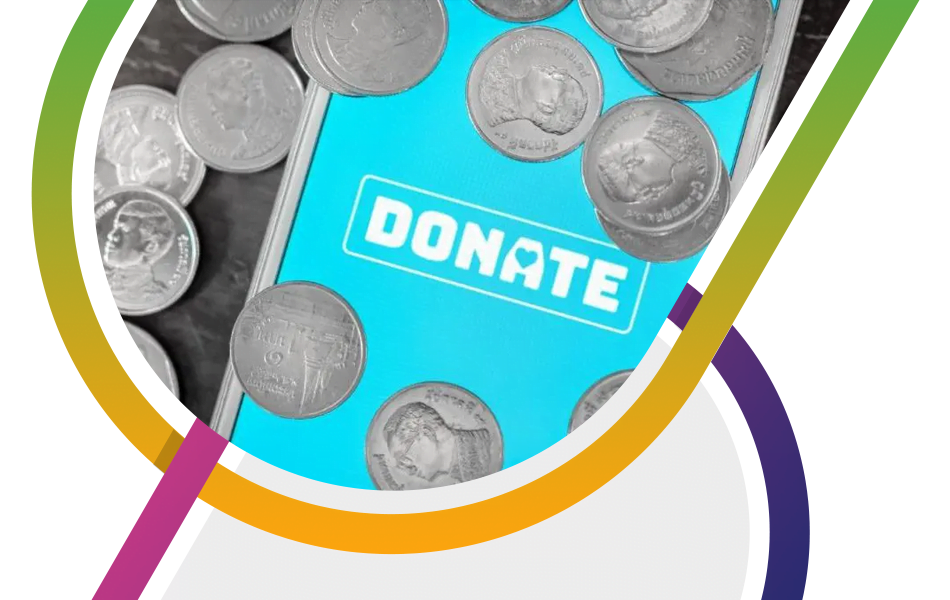
Free Digital Marketing Review
We’ll show you how to hit your business goals with result-driven digital marketing.
Digital marketing is a great tool for charities to fundraise and increase awareness.
However, with so many channels and platforms, it can be a little overwhelming. This is why it is crucial to have a strategy before you set out, and to carefully consider what types of digital marketing will help to achieve your charity’s targets.
To make this easier, we’ve outlined some of the key steps you should take when establishing a digital marketing strategy for your charity, along with some of the best channels to use.
Consider your goals
The first step in any digital marketing strategy is to consider your goals.
Common goals for charities are fundraising and awareness. Taking your budget into account, try to set specific, achievable targets. For example, raising a certain amount of funds within a year.
Once you have this end goal in mind, you need to translate it into digital marketing terms to help guide your strategy.
How will the funds be raised? Increased website traffic, email newsletters or social media? Consider which digital marketing targets are relevant to the overall goal of your campaign.
Know your audience
Knowing your audience is crucial when planning your digital marketing campaign.
Just like a B2C or B2B business would consider who their customers and clients are, charities must identify who their potential donors and fundraisers are.
Figuring out who your audience is may be a case of looking at web analytics, talking to current donors or conducting market research.
Web analytics tools such as Google Analytics can be particularly useful, as they can tell you key demographic information about visitors to your charity’s site, such as location and age.
Creating an audience persona can help to visualise this information. This involves using your knowledge of your donors to create an example avatar that represents them.
Many charities find that they have quite a broad audience, in which case segmentation is essential.
Try to break your audience down into different demographics and consider if you would like to target these all equally or just focus on one.
Design different personas for each audience segment to guide your targeted strategy.
Make sure your website is functional…
Taking into account your goals and audience, the next step is to ensure your charity’s website is optimised to meet your targets.
It’s first important to make sure your site’s functionality is excellent. Many charities forget to consider the impact of factors such as page load times on users’ experience and actions.
For example, if your donation page takes too long to load, a potential donor may lose patience and change their mind, and any marketing budget spent reaching that donor is unnecessarily wasted.
When planning a digital marketing strategy, all stages of the donors’ journey must be considered, including what happens once they have reached your website.
A simple way to assess your site’s functionality is to simply put yourself in the shoes of a potential donor and test out your website. Do all the links work? Do images and videos load quickly?
Regularly checking functionality is essential to ensure you don’t lose your audience once they’ve reached your site.
… and well designed
Beyond technical optimisation, it’s also important to consider the design of your website.
When designing your site, always keep your audience in mind. What would appeal to them? What will encourage them to learn about your charity and donate?
People don’t tend to stick around too long on charity websites, so catching your audience’s attention and communicating your message succinctly is vital.
Use plenty of images and videos that highlight your cause and work to quickly show what your charity is all about. Make sure to keep file sizes small to avoid slowing your site down, though!
As a charity, including calls to action across your site, is essential. Donation buttons should be bold and feature prominently throughout your site.
Ensure to optimise your donation forms too – they should be simple and easy to use.
Consider having pre-set donation amounts accompanied by explanations of what each amount could do for the cause (e.g. £xx could feed a family for a week).
Translating the money into real terms can make the donation feel more tangible and encourage people to donate more.
It’s also a good idea to include an option on your form that allows donors to choose whether they are making a one-off or monthly donation.
Organic social media marketing
Once your website is optimised, the first port of call for many charities is organic, or unpaid, social media marketing.
Platforms such as Facebook, Twitter, Instagram and LinkedIn offer a free, user-friendly way for charities to spread the word and encourage donations.
Though it may take some time to build an audience, it is definitely worthwhile and can have large payoffs.
For example, some charities have succeeded in going viral through social media.
You may remember the ALS Ice Bucket Challenge, a viral social media trend started by the ALS Association in 2014. This innovative idea raised over $220m for the cause at very little cost to the charity.
Beyond going viral, social media is also ideal for keeping your audience up to date with the charity’s day-to-day work.
Regular updates can both bring in new donors and encourage previous donors as they can see where their money is going.
Though it varies between platforms, 2-3 posts a week is a good benchmark. This maintains your visibility without bombarding your followers.
Which platforms you use depends on the nature of your charity and its audience, and it is important to tailor your content for each platform.
The vast majority of charities should at least aim to maintain a Facebook page as part of their digital marketing strategy, as it has the largest and most varied audience.
To help with your social media activities download our free UK 2023 social media calendar.
Influencer marketing
Another important aspect of social media to bear in mind: is influencers.
People with large social media followings can be a huge asset to your digital marketing strategy. By partnering with influencers, you can get your charity’s message to a much wider audience.
Look for influencers who you feel are relevant to your cause. Ask yourself if their followers are the demographic you are trying to reach.
While you’re finding your feet in influencer marketing, it’s better to partner with smaller, highly relevant influencers than larger ones with more general audiences.
It is also much easier to get smaller influencers onboard, as people with larger followings are often inundated with partnership requests.
Also, be sure to choose influencers from a relevant social media platform. Don’t partner with a TikTok influencer if your target audience doesn’t use TikTok!
Google ads grants
Paid advertising can seem daunting for charities with limited budgets.
Though you can often get great returns, investing upfront is still a commitment.
Luckily, Google offers a grant for charities. If you qualify, you will receive $10,000 (£7,300) in Google Ads spend each month.
This can greatly boost your digital marketing strategy if the grant is spent wisely on effective ads.
Your Google Ads will be text-based and appear on the Google search results page when users search for related terms.
Google Ads works on a pay-per-click basis, so it’s crucial to target relevant terms so as not to waste your budget on irrelevant clicks.
Carefully consider what potential donors would be searching for and tailor your ads with this in mind.
Email marketing
Email marketing is a great (and free!) digital marketing strategy for charities to use.
While email may seem a little old-fashioned in the age of social media, it’s still very relevant and effective.
In fact, OneSpot found that baby boomers were most likely to donate through email, while email was second only to social media for millennials.
Email marketing has the advantage over other channels as you target people who have provided their contact details and are presumably interested in your cause.
Newsletters can be a great way to keep in touch with your email subscribers.
You can include updates on the charity’s work so previous donors can see the good their money is doing and potentially be encouraged to donate again.
Email is also an effective way to get the word out about new appeals.
If your mailing list is looking a little thin, an easy way to build it up is to have an opt-in checkbox on your donation form.
Summary
There are lots of options when it comes to establishing a digital marketing strategy for your charity.
Make sure to start out by knowing your goals and your audience and ensuring your website is optimised.
These are the essential foundations of your strategy.
Beyond this, the channels outlined above are all great ways to start reaching your audience online and raising awareness and funds for your cause.
Still not too sure how to plan a strategy? Luckily, we have lots of experience with digital marketing for charities. Contact us for a free consultation, and we can help you get started.

Need help with your website and marketing?
Book a FREE growth strategy session with our experts
Our award-winning team will review your website and marketing goals to provide you with crucial insight and advice.

4.9 STAR
Google reviews
With 10+ years of experience, Link Digital has helped hundreds of businesses to succeed online. We can help yours too!

